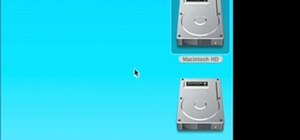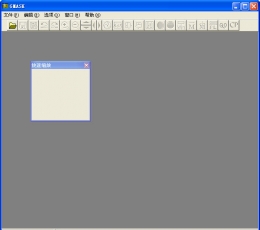
Gmask For Mac
2015 - Mac Tonight Costume BOB BAKER moon wigs Halloween Mask. Gmasking Resin Tobi Obito Naruto Uchiha Cosplay Mask+Gmask Keychain. Hi, There: I'm newly shift to Smoke. Something curious me that, in Action module in Smoke on mac, I can not find Gmask from node bin, however there has Gmask (Alt+G) functionality available in edit mode. Just for compatibility between Flame and Smoke? Or Gmask really exist somewhere in Smoke o.
Aclipping mask is a group of layers to which a mask is applied. Thebottommost layer, or base layer, defines the visible boundariesof the entire group. For example, suppose you have a shape in thebase layer, a photograph in the layer above it, and text in thetopmost layer. If the photograph and text appear only through theshape outline in the base layer, they also take on the opacity ofthe base layer.
You can group only successive layers. The name of the base layerin the group is underlined, and the thumbnails for the overlyinglayers are indented. Additionally, the overlying layers displaythe clipping mask icon.
Note:
Once completed users access network resources using standard Kerberos authentication. Add mac to active directory. Binding OS X to an Active Directory domain is quite simple.
You can link the layers in a clipping mask sothat they move together.
Hold down Alt (Option in Mac OS), positionthe pointer over the line dividing two layers in the Layers panel(the pointer changes to two overlapping circles), and then click.
In the Layers panel, select the top layer of a pairof layers you want to group, and choose Layer > CreateClipping Mask.
- When making a clipping mask from an existing layer andone you are about to create, first select the existing layer inthe Layers panel. Then choose New Layer from the Layer menu or theLayers panel More menu. In the New Layer dialog box, select UsePrevious Layer To Create Clipping Mask, and click OK.
The layers in the clipping mask have the opacity and modeattributes of the bottommost base layer in the group.
Note:
To change the stacking order of the clipping maskrelative to other layers in the image, select all layers in thegroup. Then drag the group’s base layer up or down in the Layerspanel. (Dragging a layer without selecting all the layers in thegroup removes that layer from the group.)
Ungrouping the base layer from the layer aboveit ungroups all layers in the clipping mask.
Hold down Alt (Option in Mac OS), positionthe pointer over the line separating two grouped layers in the Layerspanel (the pointer changes to two overlapping circles), and click.
In the Layers panel, select a layer in the clippingmask, and choose Layer > Release Clipping Mask. Thiscommand removes the selected layer and any layers above it fromthe clipping mask.
In the Layers panel, select any layer in the groupexcept the base layer. Either drag the layer below the base layer,or drag it between two ungrouped layers in the image.
- In the Layers panel, select any layerother than the base layer in the clipping mask.
More like this
This package is an adaptation of Andre Bartetzki's Cmask software for the Goprogramming language. It provides a library that can be imported in any Goprogram and a standalone program which uses the library. Both the library andthe program are called gmask. This is not a problem, because Go uses differentplaces to store packages (GOPATH/pkg) and compiled programs (GOPATH/bin).
You can install this package with go get:
go get github.com/fggp/gmask
Or you can download a zip archive of the project using the 'Download ZIP' button on the right.You'll get a zip file named 'gmask-master.zip'. Decompressing it you'll get a directory named 'gmask-master'.Rename this directory to 'gmask' and move it to '$GOPATH/src/github/fggp'. Enter intothe '$GOPATH/src/github/fggp/gmask' directory and install the package with go install.
Once the package is installed, you'll have to compile the gmask standalone program.Enter into the '$GOPATH/src/github/fggp/gmask/gmask' directory. The parser gmask.gohas already been generated with the go yacc tool. Build and install the programwith go install.
The original Cmask software was written by Andre Bartetzki. Andre has stopped Cmask development but the software is still present on his site: http://www.bartetzki.de/en/software.html.
Cmask was published under GPL. Thanks to Andre who kindly allowed me to publish gmask under LGPL:
'Dear François,

thanks for bringing Cmask to a new life!
Yes, you may publish Gmask under LGPL.
best
Andre'
The gmask program reflects exactly Cmask features. It has a parser that recognizes the grammar written by Andre: http://www2.ak.tu-berlin.de/~abartetzki/CMaskMan/CMask-Reference.htm
When the program is called on a parameter file respecting Cmask language, it will output aCsound sco file on standard out. One can also write the attribute bin='gmask' in a CsScore tag of a csd file to get the score generated on the fly while playing the csd file with Csound. See the examples directory in the gmask/gmask directory.
The gmask library can be imported in any go program. See the gmask/docs directory for the library documentation. The library is more permissive than the gmask program. For example, in the gmask program some generators can take args that are a value or a breakpoint function. In the library, those generators can accept for the same args a value or any generator. This means that you could for example create a tendency mask with a rnd generator as low boundarie and an osc-mask-quantizer daisy chain as high boundarie: in the gmask library, generators have type Generator and modifiers as well.
